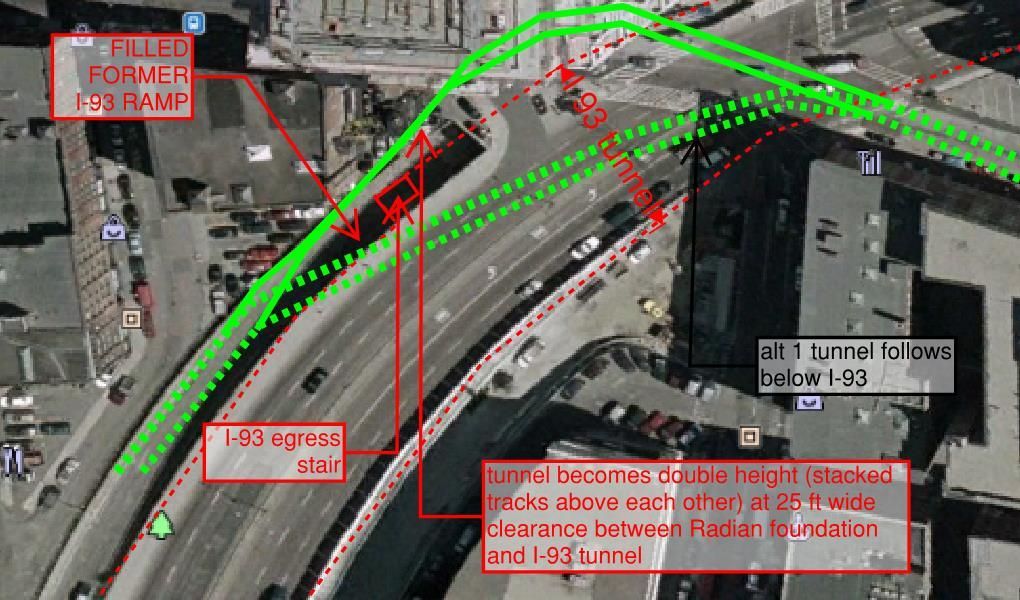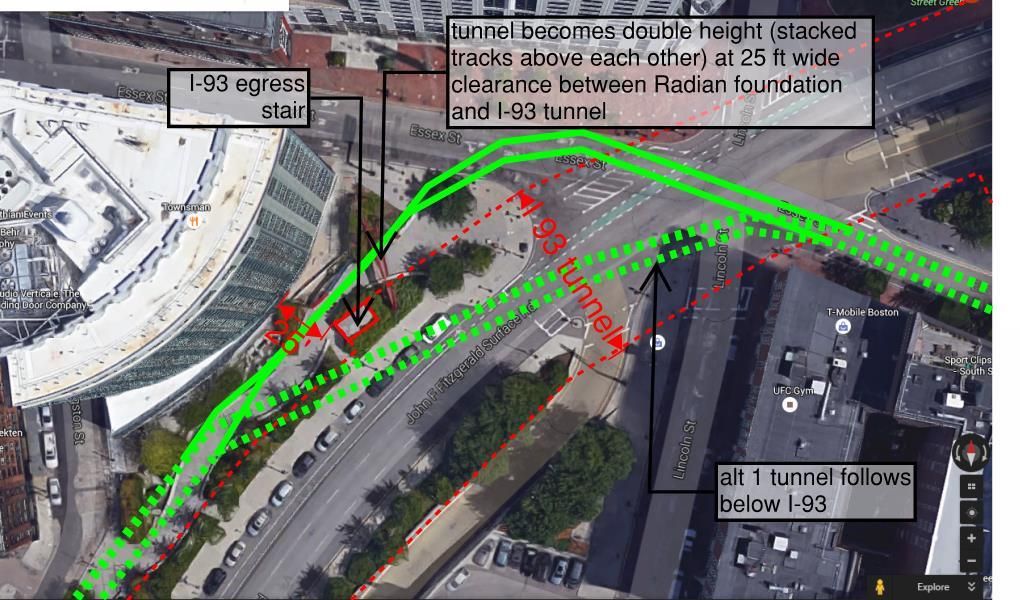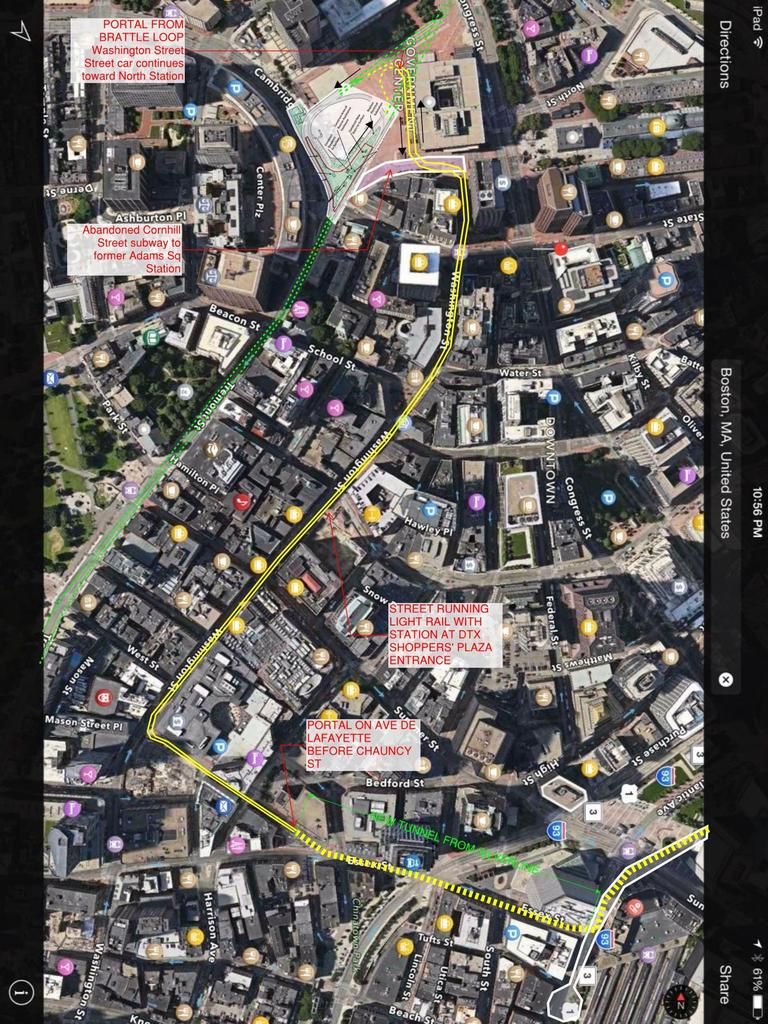F-Line I appreciate your concerns regarding scope creep and how that could adversely affect the T's positioning vis-a-vis FTA support. Moreover, I agree with your assessment. I just think that isn't really the the main issue right now. We are at somewhat of a transportation planning/funding paralysis in Massachusetts and frankly I think a lot of the impetus for major projects going forward is going to have to come from the bottom-up instead of the top-down.
That is why I would define the next steps on this particular proposal as being basic advocacy work. The goal is to get this on the public's radar in a broad way so that Massport/MBTA starts really examining this proposal. Massport/MBTA can bear in mind how to define the scope of the project so as to best position it for FTA matching funding. In the meantime the goal is just to put the policymakers in a position where people are asking "What are your thoughts on this?" and "Why haven't you looked into this yet?" because that is the only way the planner are ever going to go back to the drawing board on SL Phase III.
[If you listen to the latest TransitMatters podcast Rich Davey goes over why the T simply just not have the bandwidth to really think long-term and creatively on transit planning on its own because it is so focused on just trying to get through every day. It's worth a listen.]
Does anyone have ideas for how to get this into the general consciousness of the citizens and planning departments of Boston as well as Massachusetts?
At this point it is still an interesting hypothetical dilemma but it also addresses a real need for transit and could lead to better rail operations eventually as well as more options for relieving Central Subway congestion so how do we move this out of the echo chamber here and into the public dialogue?
So with that all being said I think these are the pieces you need to have in place to start laying the groundwork for an advocacy push:
1. You need the general public to become aware that this is a doable proposal. Specifically, you need them to know
they can have a train in the Seaport! It's not fantasy land crap.
2. You need to get something the property developers can sink their teeth into. This means something a bit more involved than a PowerPoint outlining the idea. If it were a veritable feasibility study they could then wave that in front of the mayor, the legislature and the governor and say "Hey, this [institute/group/scholar,etc.] says the Seaport can have a train. What is the status of that?" You really need to co-opt this constituency in order to give this proposal some political heft. They generally aren't persuaded by altruism but they are aware that congestion could undermine some of their investments going on in the Seaport and would very much be in favor of a major solution that looks to mitigate that problem while simultaneously making their investments even more valuable.
3. The feasibility study needs to account for Washington Street light rail. That's because a train to the Seaport may be meritorious in its own right but the politics of sending a train to the richest part of the city and neglecting economic justice areas could sink this idea. Couple it with Washington street light rail and say how one project begets the other. Marry those two constituencies together. It's the only way this thing can get the requisite support.
How to do that?
I see two scenarios.
The first involves a bunch of AB posters and transit enthusiasts getting together and preparing a presentation. The presentation can more or less synthesize the reasoning that we've gone over in this thread. That means quoting all the old studies and introducing the issue as well as the proposed solution (obviously this would need to be done in a more succinct and appealing manner than is done here). The presentation should be a slick PowerPoint, a clever youtube video, a snazzy webpage, and a social media push. Moreover, the rollout should be carefully choreographed so as to maximize press exposure when it finally does go live.
The idea behind this method really just to "pitch" the idea in the hopes that the general public or the powers at be are so excited by the proposal they then pick up the torch and try to carry it forward. This methodology could work but I fear that the initial detractors saying that this is just a fanciful idea we can't afford will make this approach lose wind quickly. It might resemble North South Rail Link advocacy which often tends to be disregarded as too crazy to really be taken seriously. It's a shame but that's often how these things go.
That being said, at least this idea would be out there and one could hope that the cause would be carried on at some point. That by itself makes this approach worthwhile at a minimum. I just don't have much faith that it would accomplish much in the current environment.
The second scenario involves raising funds to pay for a Feasibility Study. Once the feasibility study is prepared the promoters could then begin a soft rollout to property developers in the Seaport and community leaders in the Washington Street corridor/those neighborhoods impacted by the Washington Street light rail connection. Once those stakeholders are bought in, the promoter can then prepare the wider public campaign that includes the PowerPoint, the youtube video, the webpage, social media, etc. Again, the "wide" rollout will need to be in such a manner as to maximize press exposure.
This approach has the advantage of making the whole thing a lot more credible because of the study behind it. Also, you can get broader buy-in from the outset having done some groundwork in advance with the soft rollout. Most importantly, this approach stunts the inevitable comments about how this is just a crazy subway proposal that we could never ever afford.
The question is, how much capital does one need in order to undertake this kind of targeted advocacy? Or more specifically, how much does a feasibility study cost (the assumption being the advocacy part involving the soft rollout, stakeholder marshaling, presentation prepartion and press campaign when you finally do go wide is mostly done on a volunteer basis)? That is the key question because if we are talking in the tens of thousands of dollars I think the funds could be raised from deep-pocketed real estate developers in the Seaport area. Maybe even $100k. However, if studies start climbing much higher than that I think this approach is just too rich for grass-roots advocacy.
The example for this approach is the Brooklyn Queen connector streetcar that was just rolled out. Whether or not you think that proposal in particular is a good idea the study and presentation was funded by real estate interests so that by the time it was publicized it had some real substance to it. This seems to have had an impact as the idea was taken up by the De Blasio administration in his recent State of the City address. A similar approach could be applied in this instance in order to kick-start the long overdue discussion on this topic and put this front and center on our policymakers agenda.
I obviously opt for the second scenario as that is the most effective way to get something done in this city. However, it's hard to figure out the barriers to entry without having a sense of how much a feasibility study would cost. Anyone else have any thoughts?





